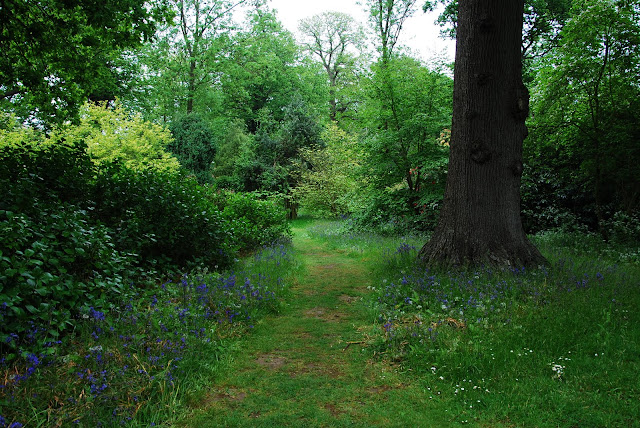See where at intervals the firefly's spark
Glimmers, and melts into the fragrant dark;
Gilds a leaf's edge one happy instant, then
Leaves darkness all a mystery again!
Thomas Bailey Aldrich ( 1895)
Of the millions of insect species, none has captured the world’s imagination like the firefly. When young, I often saw them in fields, near woods or streams, when dusk was nearing darkness, a burst of light, then another and another, appearing and reappearing, bright for a moment then gone like a falling star.
Found throughout the world, sometimes in immense numbers, in fascinating displays, they exhibit marvelous behavior. Here is a scene from a firefly hunt in New South Wales in Australia:
Down into the grasses on the bank, and there, in the delicate moment before the last light goes, were fireflies, gliding out over the water, in low arcs like the sweep of the grasses. On down the river, and on and on, were fireflies, lines of them wavering out from this bank and the other and back again, sketching their uncertain tracks of light down close to the surface of the water, hidden from outside by the grasses. In the last moment of light, with the darkness creeping up from the water and the moving plumes of grass still faintly outlined, there, far as the river stretched – an infinite number of little lines in two long rows on either side, quiet, unearthly. 1
In Southeast Asia and in the Great Smokey Mountains in Tennessee, some species exhibit flash synchrony - they light up in synchronized fashion. An observer says:
These bugs "start up" in mid June at 10 p.m. nightly. They exhibit 6 seconds of total darkness; then in perfect synchrony, thousands light up 6 rapid times in a 3 second period before all going dark for 6 more seconds. . . .It is beautiful 2
An observer from Thailand writes:
Thousands of fireflies fill the branches of trees along the Mae Klong River here, flashing on and off in unison - relentless and silent, two times a second, deep into the night.
Nobody knows why. 3
The firefly has found its way into literature and poetry. One person compiled a list of literary references to fireflies totalling 47 books, 11 magazine articles and 1 play. 4
Go to Amazon.com and put in “Fireflies in children’s literature” and you will get a long list of books, written to delight, inform and inspire children.
The firefly is not a fly, but a beetle, of the Order Coleoptera. Its off-and-on bioluminescence is from the substance Luciferin on its abdomen, used by males and females in flash patterns to attract the opposite sex. Its larvae, the glowworm, produces light to warn predators that glowworms are not good eating. The adult feeds on nectar and pollen; the predacious larvae dines on earthworms, snails and slugs, detecting the slime trail of the snail and slug and following it to the prey.
Sadly, fireflies are disappearing everywhere; the meadows, fields, ponds and creek edges where it once thrived are being destroyed by development, its ancient mating rituals disrupted by lights from developments:
Preecha Jiabyu used to take tourists on a rowboat to see the banks of the Mae Klong River aglow with thousands of fireflies.
These days, all he sees are the fluorescent lights of hotels, restaurants and highway
“The firefly populations have dropped 70 percent in the past three years”, said Preecha . . . . It’ sad. They were a symbol of our city” 5
In July, 2008, a symposium in Thailand on “Diversity and Conservation of Fireflies” drew more than 100 entomologists and biologists who agreed that fireflies are a "canary in the coal mine", their decline could signal bigger problems ahead in the world ecosystem. 6
Surely we cannot afford to lose the firefly. It “lights the way” to an understanding of the need to save all creatures. We must not lose its beauty or its symbolism nor deny them to our children or our children’s children. What can ordinary gardeners, do? A blogger in Chicago provides an answer. Her “habitat gardening” resulted in an annual increase in the firefly population in her yard;
First I have eliminated much lawn. Large areas of the garden have spaces of soil between the plantings which is covered only with decaying organic matter.
Wood piles and stumps are placed here and there to decompose. Abundant leaf mold and much compost is incorporated into shrub and woodland edge type planting areas. Most dormant plants are left intact for the winter and cut back only in spring.
We do not use any pesticides,herbicides or chemical fertilizers.
Most areas are dug once to prepare for planting then left undisturbed.
Mulches, low ground covers, shrubby areas creating shaded ground, lush overall greenery and a small pond increase the moisture and humidity levels. 7
A good formula for all gardeners.
3. http://www.encyclopedia.com/doc/1P1-158414918.html

 This plant makes a great low hedge in a sunny dry location. Try in combination with other perennials and annuals. Winter interest? Covered. The dried seed heads stand up well in snow and rain and provide bird forage.
This plant makes a great low hedge in a sunny dry location. Try in combination with other perennials and annuals. Winter interest? Covered. The dried seed heads stand up well in snow and rain and provide bird forage. 




























